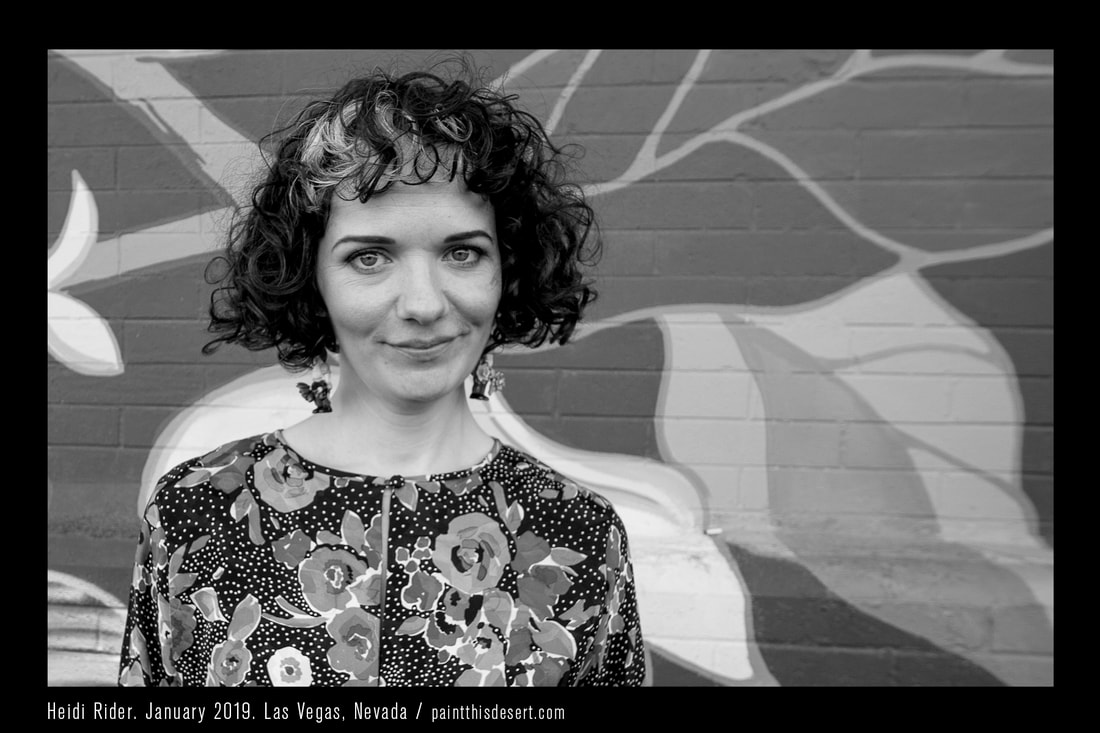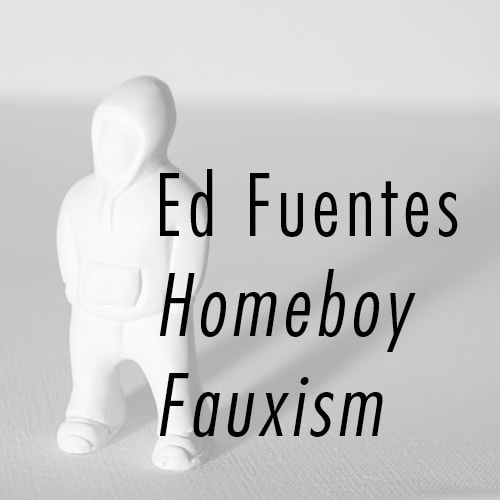|
Heidi Rider’s personality keeps her stage presence always on, or at least warming on a back burner. You can see how it is adapted for everyday life (At a local coffee house she is using her indoor voice). Her creative rap sheet is known. She trained within the studies of physical theater with a nefariously rough crowd of clowns at CUNY Hunter College and Dell’Arte International School. She came to Las Vegas when invited to co-curate Small Space Fest, then later found solid local gigs. Another reason she stayed was because the city was a source of material for both setting a mood and as a muse. But Rider did not take up a Las Vegas residency just to transform the region. She wanted the big, bright and theatrical city to influence her. Las Vegas is an oversized shiny object waiting to shape her work as a clown. That is what she considers herself first: a clown. There should be no confusion of thinking she’s a mime, physical actor, or performance artist, although each of those styles are sourced by Rider for the sake of her clown-ness. Even over a latte her physical timing and use of different accents leaves no ambiguity as to which craft she is dedicated. Yer Rider isn't brash. She is gracefully animated. The clear expectations of what we expect from a stage clown give her performances clarity. It also prompts Rider. Knowing how to focus movement when there is chaos and disorder can add impact to a gesture or a glance. That is not to say there is no artistic social practice in her work, as is expected in anything weaving performance in today’s fine art lane. Rider credits Daniel Bozhkov and Carrie Moyer as artists who have given her low-brow work some high-brow attitude. When thinking if there is a connection in producing feminist art, Rider recalls a statement by Moyer: “[T]he mere act of a woman making art – that alone is feminist.” Sometimes that is all that is needed for a contemporary layer. Then there was the time Moyer affectionately referred to one of Rider’s paintings as “white trash”. That is when things became even clearer: it gave Rider a direct path toward creating her own kitsch aesthetic. It isn’t always subtle; Rider dwells in character and gags that play off the subculture of “white trash.” It fits with her style of responding to traits that are, as she says, an “amplification of faults”. Since Rider is tuned in to the physical, and she is conscious of a light crookedness in her own teeth, she is known to black one out to bring attention to what she calls a flaw. With details like that, Rider is an artist who reveals human vulnerabilities through the basics of clowning and comedy, and her characters become unheroic, yet cool. Mixed with art-minded practice, Rider’s clowning is well-crafted abstract performance art. Yet the real focus is her distinct physical timing that has her own the stage aura of vaudeville, British Music hall, and Vegas stages. It is also combined with a post-modern Mack Sennett cinematic presence, a link to television comics during a cold war culture. Rider wants to keep changing the concept of clown as a skill-based expression of physical optimism where idea, emotion and impulse guide an audience to a place that is dangerous to all: clown meets performance art. “I want to break through walls,” Rider says while talking about ways to expand the forms of improvisational clown performance. It would be unscripted, working in an unstructured use of space, mimicking the well crafted epic spontaneity of Las Vegas. Says Rider, “I knew Las Vegas would change me as an artist.”
0 Comments
Your comment will be posted after it is approved.
Leave a Reply. |
An Online Arts Journal
Exhibition:
February 2 – March 31, 2019 Artist Reception and Gallery Talk: Sunday, February 10, 2019, 4 p.m.–7 p.m. S P O N S O R
ARCHIVES
January 2019
TAGS
All
|




